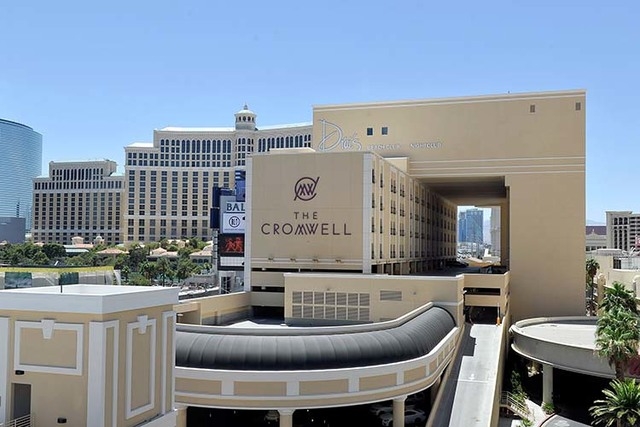Strip’s gaming revenue robust while regional markets struggle
With six months on the books, the investment community have a clear picture of the casino industry in 2014.
Las Vegas is on an upswing.
Gaming revenues have jumped more than 5 percent over the last three months and the Strip is poised to record its fifth straight annual gaming revenue increase since 2009, when the market reverted back to 2004 numbers.
As for the regional gaming markets? Not so much.
Moody’s Investors Service recently downgraded its view of the U.S. gaming market from “stable” to “negative,” putting all the blame on regional gaming destinations where weak results have investors sweating.
Atlantic City is not alone in recent rash of planned and possible casino shutdowns. Regional operators are also considering market contractions.
In Mississippi, Harrah’s Tunica closed in June and the 2-year-old Margaritaville Casino in Biloxi announced last week it will close in mid-September.
Union Gaming Group analyst Robert Shore said Margaritaville’s closing was “indicative of ongoing weakness in regional revenue trends as we have continued to observe.”
Las Vegas is another story.
Closed casinos are coming back to life. The Cromwell, a $185 million renovation of Bill’s Gamblin’ Hall, opened in April. The $415 million SLS Las Vegas — formerly the Sahara — has an Aug. 23 opening date.
Other nongaming ventures on the Strip, such as The Linq retail, dining and entertainment center, and MGM Resorts International’s The Park, a similar nongaming addition between New York-New York and Monte Carlo, illustrate the market’s health.
Moody’s senior gaming analyst Keith Foley said the Strip’s gaming revenue is healthy compared with regional markets.
In the last three months, Connecticut casinos have reported staggering revenue declines. Other states had gaming revenue declines for at least two of the three months, including Colorado, Delaware, Illinois, Indiana, Iowa, Kansas, Louisiana, Michigan, New Jersey, New York, Missouri and Pennsylvania.
“Compared to the U.S. regional and local gaming markets, the Las Vegas Strip has a much broader, deeper and diversified pool of visitors,” Foley said. “It attracts people on a nationwide and global basis, along with a very large revenue and earnings component related to the midweek convention business.
Foley added that Strip resorts collect a larger revenue total from nongaming sources, including rooms, entertainment, restaurants and retail.
In the past 12 months, Strip casinos have collected roughly $6.4 billion in gaming revenue, according to Moody’s. The Strip is the nation’s largest U.S. gaming revenue market. But it accounts for less than 20 percent of all American-produced gaming revenue.
“This means that it does not tend to be a primary driver of our industry outlook,” Foley said.
Moody’s analysts believe gaming revenue nationwide will decline between 3 percent and 5 percent over the next 12 to 18 months. That drop would decrease overall gaming industry cash flow between 4.5 percent and 7.5 percent.
Foley said the majority of the declines are coming from maturer regional markets.
“The fixed-cost nature of the industry will make it difficult to fully mitigate these revenue declines through expense reduction, causing earnings to decline more rapidly than revenue,” Foley said. “In addition, the proliferation of recent casino openings, along with future supply additions, will have a further cannibalizing effect on overall industry earnings, despite their contribution to industry-wide gaming revenue.”
Others shared Foley’s opinion.
Fitch Ratings Service analyst Michael Paladino said the weakness in regional gaming markets will persist.
“We attribute this pessimism to longer-term structural macroeconomic and secular factors,” Paladino said.
The many reasons Paladino cited include saturation across regional markets, stagnant wages among lower- tier players, and a potentially lower propensity to gamble among younger generations.
There are 23 states with commercial casinos while 28 states have Indian casinos (there is some overlap). Over the next several years, only a handful of states — Kentucky, New Hampshire and maybe Texas — might legalize casinos.
“Results could be lackluster, even if more states allow casinos, as is the case in Ohio, which we estimate cannibalized roughly one-third of its revenues from surrounding states,” Paladino said.

















